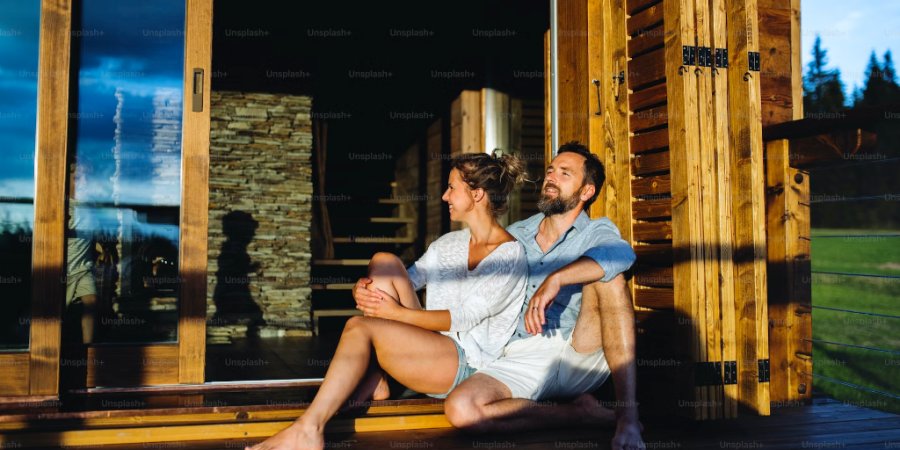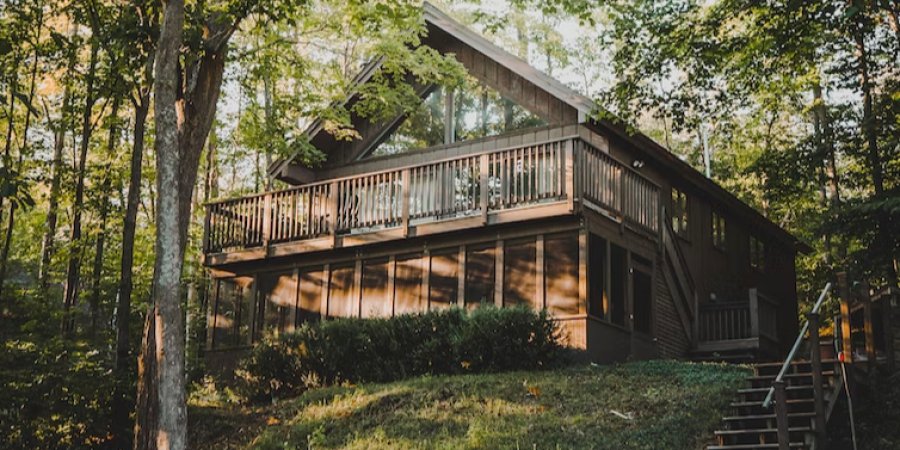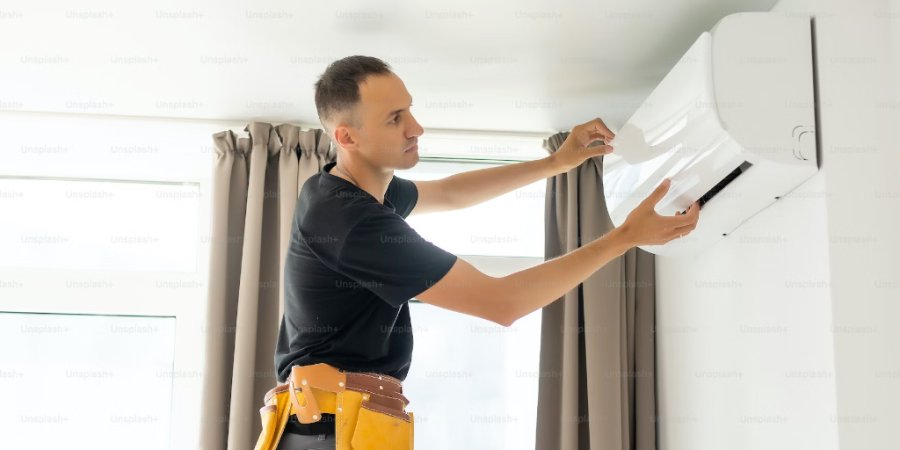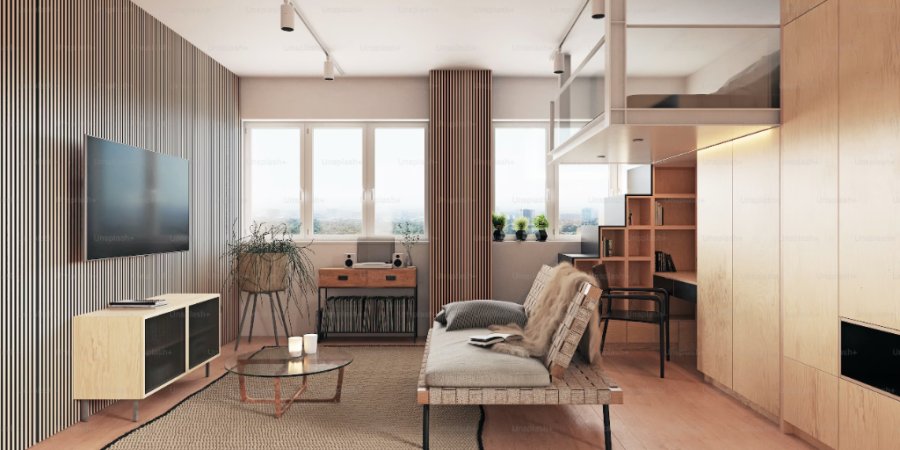Top Tips for Keeping Your House Cool

Summer is not just about beach outings and BBQs; it's also about battling the relentless heat that can make our homes feel like ovens. While air conditioning might seem like the only respite, it's not always the most eco-friendly or economical solution. In this comprehensive guide, we'll delve into various innovative and practical tips for keeping your house cool, allowing you to enjoy a comfortable summer without a hefty energy bill.
Keeping the Sun Out

The sun's rays can turn a comfortable home into a sweltering space. Keeping the sun out is a fundamental strategy in maintaining a cool indoor environment. Here's how you can effectively block the sun and enjoy a cooler home.
Close Your Blinds and Curtains
Windows are often the primary entry points for sunlight. By closing blinds and curtains, especially on north and west-facing windows, you can significantly reduce indoor temperatures. Investing in block-out curtains or shades can add an extra layer of protection, reflecting the sun's rays and keeping the heat outside. This simple yet effective method can make your home feel noticeably cooler without any additional cost.
Block the Heat with External Solutions
External Blinds and Awnings
External coverings like blinds and awnings can be highly effective in shading windows and walls. By blocking the sun before it reaches the glass, these solutions prevent heat from entering your home. Awnings can be retractable, allowing you to control the amount of shade as needed, while blinds can be adjusted to provide the perfect balance between light and heat control.
Planting Deciduous Trees
Planting deciduous trees near windows can provide natural shading. These trees shed their leaves in winter, allowing sunlight to warm your home, and grow leaves in summer to provide cooling shade. It's a long-term investment that not only enhances your home's appearance but also contributes to a more sustainable living environment.
Window Tinting and Films
Window tinting and reflective films can be applied to existing windows to reduce heat gain. These solutions reflect a portion of the sun's rays, preventing them from heating the interior. With various options available, you can choose a tint or film that complements your home's aesthetics while providing the desired level of heat reduction.
Upgrade Ceiling Insulation
Proper ceiling insulation acts as a barrier, keeping the heat out in summer and warmth in during winter. If your insulation is outdated or inadequate, upgrading to a higher R-value material can significantly improve your home's temperature regulation. It's a one-time investment that pays off in enhanced comfort and energy savings year-round.
Use Large Potted Plants
Large potted plants placed near windows can provide shade and add a touch of green to your living space. Plants like bamboo or tall shrubs can act as natural sun blockers, reducing heat entry. Additionally, plants contribute to better air quality, making this an eco-friendly and aesthetically pleasing solution.
Smart Use of Appliances

Utilizing household appliances smartly can significantly contribute to keeping your house cool. From optimizing air-conditioners to using fans and other gadgets efficiently, here's how you can make the most of your appliances to beat the summer heat.
Optimize Your Air-Conditioner
Set the Right Temperature
Finding the right temperature setting for your air-conditioner can make a big difference in both comfort and energy consumption. Setting the thermostat between 24-27°C (75-80°F) can be both comfortable and energy-efficient. A mere 1°C increase in warm weather can reduce running costs by about 10%.
Choose Energy-Efficient Models
When purchasing a new air-conditioner, looking for models with a high energy-star rating ensures that you have an efficient cooling system tailored to your home's needs. Researching and choosing the right type and size of air-conditioner for your space can prevent overcooling and save on energy bills.
Regular Maintenance
Regular cleaning and maintenance of your air-conditioner can enhance its efficiency. Dirty filters and clogged vents can hinder airflow, forcing the system to work harder. Scheduling regular check-ups and cleaning the filters can prolong the life of your air-conditioner and keep it running smoothly.
Utilize Ceiling Fans Correctly
Adjust Fan Rotation
Ceiling fans can be a fantastic cooling aid if set correctly. In summer, setting them to rotate counter-clockwise pushes air down, creating a cooling effect. Understanding the rotation settings and adjusting them seasonally can optimize their cooling (or heating) effect.
Pair with Other Cooling Methods
Ceiling fans don't cool the air; they cool people by creating a wind-chill effect. Pairing ceiling fans with other cooling methods, such as open windows or damp curtains, can enhance their cooling effect. Using fans in conjunction with air-conditioning can also allow you to set the thermostat higher, saving energy.
Smart Use of Other Appliances
Cook During Cooler Hours
Kitchen appliances like ovens and stovetops can generate a lot of heat. Cooking during cooler hours of the day or using a microwave, slow cooker, or toaster oven can minimize heat buildup in the kitchen.
Use Energy-Efficient Lighting
Traditional incandescent bulbs can produce a lot of heat. Switching to energy-saving bulbs like LEDs not only reduces energy consumption but also minimizes heat production, contributing to a cooler home.
Manage Electronic Devices
Electronic devices like computers and TVs can generate heat when in use. Turning them off when not needed and using energy-saving modes can reduce heat generation and contribute to a cooler living environment.
Home Management for Cooling

Managing your home to optimize cooling is not just about using appliances wisely; it's about understanding airflow, insulation, and daily habits that can make a significant difference in indoor temperatures. Here's a comprehensive guide to home management strategies for keeping your house cool.
Close Doors and Seal Gaps
Isolate Unused Rooms
Closing doors to rooms that are not in use can help keep cool air where it's needed most. By isolating unused spaces, you concentrate the cooling efforts in the areas you frequent, making them more comfortable without wasting energy.
Seal Windows and Doors
Gaps around windows and doors can allow cool air to escape and hot air to enter. Sealing these gaps with weather stripping or caulk can create a more efficient cooling environment. Even small gaps can make a difference, so a thorough inspection and sealing process can be a valuable investment.
Evening Strategies for Natural Cooling
Open Windows Strategically
When temperatures drop in the evening, opening windows can allow cooler air to circulate through your home. Understanding the direction of the breeze and opening windows accordingly can create a natural airflow that cools your living space.
Cook Outdoors
Cooking inside can generate a lot of heat. Taking the cooking outdoors to a grill or outdoor kitchen can be a fun and cooler alternative. Enjoying meals outside in the evening breeze can also add to the summer experience without heating up the house.
Utilize Outdoor Living Spaces
Embracing outdoor living spaces like patios and decks during cooler evenings can provide a refreshing change of scenery without relying on indoor cooling. Comfortable outdoor furniture and shade solutions can create a pleasant outdoor living area.
Insulation and Building Materials
Invest in Proper Insulation
Proper insulation is not just for keeping warm in winter; it's equally vital for cooling in summer. Investing in quality insulation for walls, ceilings, and floors can prevent heat from entering and cool air from escaping, maintaining a comfortable indoor temperature.
Consider Cool Roofing
Cool roofing materials reflect more sunlight and absorb less heat than standard roofing materials. If you're considering a roof upgrade, exploring cool roofing options can contribute to a cooler home and reduce air-conditioning needs.
Use Reflective or Light-Colored Paint
Exterior paint color can influence how much heat your home absorbs. Light-colored or reflective paints can reflect sunlight, keeping the house cooler. Even interior wall colors can have an effect, with lighter shades reflecting more indoor lighting and reducing the need for additional lighting, which can generate heat.
Personal Cooling Strategies

While managing your home's cooling is essential, personal cooling strategies can also play a significant role in keeping you comfortable during hot weather. These methods focus on individual comfort and can be applied anywhere, whether at home, work, or on the go. Here's a comprehensive guide to personal cooling techniques.
Chill Out with Simple Tricks
Stay Hydrated
Drinking plenty of water is crucial in hot weather. Staying hydrated helps your body regulate its temperature more efficiently. Sipping on cold beverages, especially water, can provide immediate relief and keep you feeling fresh.
Use Cool Compresses
Applying a cool, damp cloth to pressure points like your wrists, neck, or forehead can provide instant cooling. Keeping a small towel or cloth in the fridge and using it as needed can be a quick and easy way to cool down.
Enjoy Cold Showers or Baths
A cold shower or bath can be incredibly refreshing on a hot day. Even just rinsing your feet with cold water can provide relief. If a cold shower seems too intense, starting with lukewarm water and gradually lowering the temperature can still provide a cooling effect.
Innovative Fan Hacks
Create a DIY Air Cooler
A simple fan can be transformed into a cooling device with some creativity. Placing a bowl of ice or frozen water bottles in front of a fan can create a mist of cool air. Experimenting with different setups can lead to a personalized cooling solution that fits your needs.
Portable Fans
Small, battery-operated fans can be a great on-the-go cooling solution. Whether at the office, in the car, or enjoying outdoor activities, a portable fan can provide a personal breeze that keeps you comfortable.
Choose the Right Fabrics
Wear Breathable Clothing
Choosing clothing made of breathable fabrics like cotton, linen, or moisture-wicking materials can help keep you cool. Loose, light-colored clothing allows air to circulate around your body, enhancing the cooling effect.
Opt for Cooling Bedding
Your choice of bedding can influence how cool you feel at night. Opting for sheets and pillowcases made of natural, breathable fibers like cotton can enhance comfort during hot nights. Special cooling pillows and mattress pads are also available for those who struggle with overheating during sleep.
Mind Your Diet
Eat Cooling Foods
Certain foods have a cooling effect on the body. Enjoying salads, fruits like watermelon and cucumber, and avoiding heavy, hot meals can contribute to a cooler feeling. Cold soups and smoothies can also be refreshing meal options.
Avoid Alcohol and Caffeine
Alcohol and caffeine can dehydrate the body, making it harder to stay cool. Limiting or avoiding these beverages during extreme heat can help your body maintain its natural cooling mechanisms.
Conclusion
Keeping your house or apartment cool during the sweltering summer months doesn't have to be a costly or energy-consuming endeavor. By embracing a holistic approach that combines keeping the sun out, smart use of appliances, home management strategies, and personal cooling techniques, you can create a comfortable living environment that's kind to both your wallet and the planet. Whether you live in a spacious house or a cozy apartment, these practical and innovative tips offer everyone a way to beat the heat and enjoy a cool, relaxing summer. Explore these strategies and find the ones that best fit your lifestyle, and you'll be well on your way to a more enjoyable and sustainable summer experience.
Previous Posts: